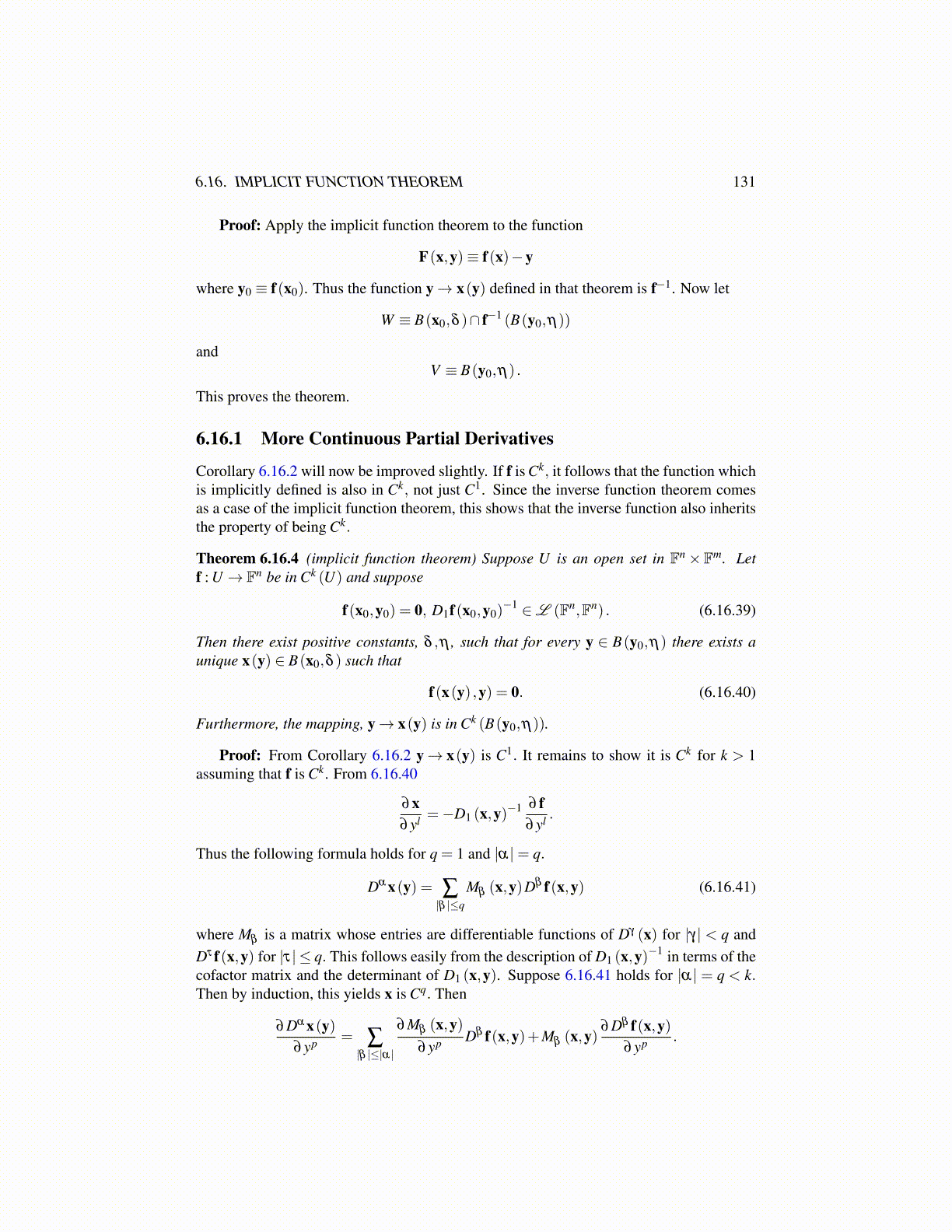
6.16. IMPLICIT FUNCTION THEOREM 131
Proof: Apply the implicit function theorem to the function
F(x,y)≡ f(x)−y
where y0 ≡ f(x0). Thus the function y→ x(y) defined in that theorem is f−1. Now let
W ≡ B(x0,δ )∩ f−1 (B(y0,η))
andV ≡ B(y0,η) .
This proves the theorem.
6.16.1 More Continuous Partial Derivatives
Corollary 6.16.2 will now be improved slightly. If f is Ck, it follows that the function whichis implicitly defined is also in Ck, not just C1. Since the inverse function theorem comesas a case of the implicit function theorem, this shows that the inverse function also inheritsthe property of being Ck.
Theorem 6.16.4 (implicit function theorem) Suppose U is an open set in Fn×Fm. Letf : U → Fn be in Ck (U) and suppose
f(x0,y0) = 0, D1f(x0,y0)−1 ∈L (Fn,Fn) . (6.16.39)
Then there exist positive constants, δ ,η , such that for every y ∈ B(y0,η) there exists aunique x(y) ∈ B(x0,δ ) such that
f(x(y) ,y) = 0. (6.16.40)
Furthermore, the mapping, y→ x(y) is in Ck (B(y0,η)).
Proof: From Corollary 6.16.2 y→ x(y) is C1. It remains to show it is Ck for k > 1assuming that f is Ck. From 6.16.40
∂x∂yl =−D1 (x,y)−1 ∂ f
∂yl .
Thus the following formula holds for q = 1 and |α|= q.
Dα x(y) = ∑|β |≤q
Mβ (x,y)Dβ f(x,y) (6.16.41)
where Mβ is a matrix whose entries are differentiable functions of Dγ (x) for |γ| < q andDτ f(x,y) for |τ| ≤ q. This follows easily from the description of D1 (x,y)−1 in terms of thecofactor matrix and the determinant of D1 (x,y). Suppose 6.16.41 holds for |α| = q < k.Then by induction, this yields x is Cq. Then
∂Dα x(y)∂yp = ∑
|β |≤|α|
∂Mβ (x,y)∂yp Dβ f(x,y)+Mβ (x,y)
∂Dβ f(x,y)∂yp .